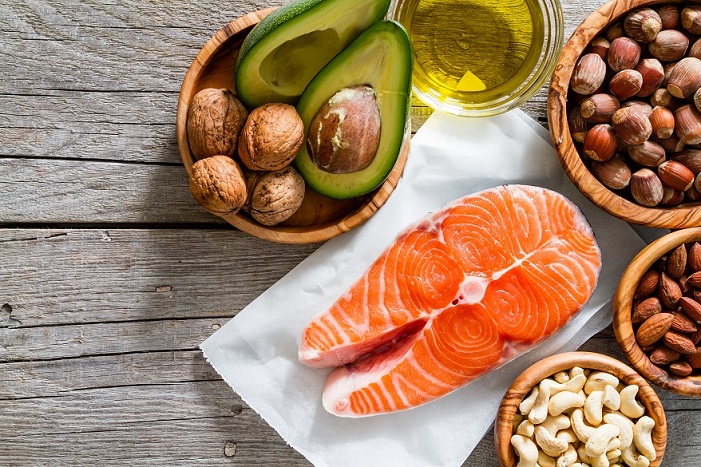SUMMARY
Food inflation makes it harder for consumers to afford healthy options at the grocery store. This guide will help you find more affordable options and alternatives to buy so you can still eat clean without breaking the bank.
Nutritious, quality food can be pricey, even without inflation raising the prices even more. It seems easier and less costly to go for those grab-and-go snacks, especially when they’re at a 2-for-1 price. The good news is that healthy eating on a budget can be done!
In fact, eating healthy only costs about $1.50 more per day than unhealthy eating!
You can save money while still buying whole foods and other good-for-you ingredients using this helpful “how to eat healthy on a budget” guide.
Table of Contents
Groceries Least Affected By Inflation
Example Shopping List
Tips for Planning Meals Ahead of Time
– Create Weekly Menus
– Look for Recipes That Use Common Ingredients
– Let Someone Else Cook for You
– Write a Grocery List & Stick to It
– Buy Whole Foods Whenever Possible
– Generic is Your Friend
– Replace Meat with Other High-Protein Foods
Healthy Recipes Using Common Ingredients
Groceries Least Affected by Inflation
This is a list of foods that haven’t been hit nearly as hard by inflation as other foods have. They are extremely healthy and can be used in all types of cheap healthy food recipes for your weekly meal prep!
· Rice
· Whole vegetables (specifically onions and potatoes)
· Whole fruits (specifically strawberries, cucumbers, bananas, apples)
· Canned fish & seafood
· Beef roast
· Pork chops
· Steak
Example Shopping List
Learning how to eat healthy on a budget starts with learning which ingredients are the most useful. While you might have a hard time making meals using only the above, this is an example shopping list you can use to stock up on healthy, affordable ingredients.
Seasonal groceries:
SPRING
Apricots, avocados, pineapples, strawberries, broccoli, artichokes, asparagus, mushrooms, peas
SUMMER
Blackberries, blueberries, cherries, peaches, plums, watermelon, eggplant, green beans, tomatoes, summer squash, zucchini, corn
FALL
Grapes, kiwi, pears, Brussel sprouts, parsnips, sweet potatoes, turnips, kale, cauliflower, figs, mangoes
WINTER
Oranges, grapefruit, potatoes, winter squash, carrots, onions, cabbage, apples, lemons, pears
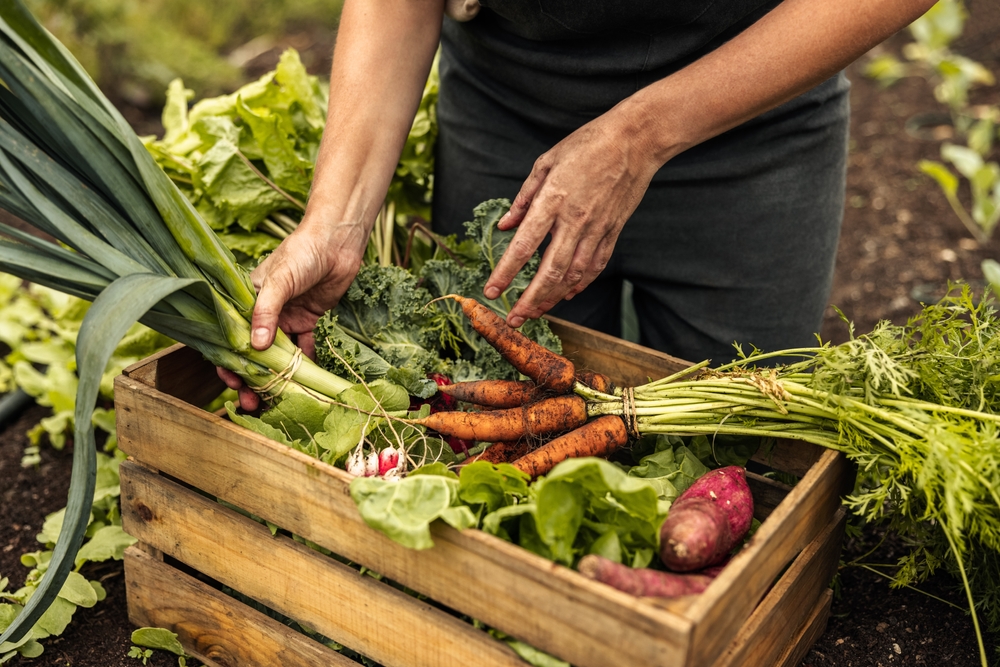
Year-Round:
· Chickpeas
· Tofu
· Frozen veggies
· Whole grain bread
· Dried pasta
· Pasta sauce
· Spices
· Flour
· Canned fish
· Canned chicken
· Canned or dried beans
· Nuts and nut butters
· Rolled oats
· Whole grain wraps
Stock up on pantry staples like dry pasta, rice, canned tomatoes, frozen fruits and vegetables, onions, potatoes, spices, and flours. Eggs and chicken are also great to have on hand, but they are currently being affected by market inflation, and might be hard to fit into the weekly budget.
SUMMARY
Some foods are grown seasonally and buying them outside of their harvest will raise their prices. Try to buy foods during their season and stock up on year-round essentials.
Tips for Planning Meals Ahead of Time
Planning is the key to success, so to make sure you succeed in eating healthy on a budget, knowing what you’re going to eat is the first step. Meal planning for the week will give you a clear picture of what you need to buy, prep, and how much time it will take to cook.
Create Weekly Menus
Starting on Sunday, decide what you’ll be eating for the week. Making meals in bulk comes in handy for this, especially when you consider this is planning about 21 meals total! Creating a menu that uses similar ingredients can also help.
Scan your cabinets and fridge to see what you already have so you’re not buying ingredients you already have. Make sure none are expired or going bad!
Meal planning websites like Eat This Much can help you figure out meals you can eat that fit into your diet, if you’re looking for some new meal ideas! There is also My Fridge Food which lets you check off ingredients you have at home, and it will give you recipes you can make from what’s already in your fridge.
SUMMARY
Make use of what you already have and don’t double-buy ingredients. There are websites and apps that can help you come up with meals plans using things already available in your fridge.

Look for Recipes That Use Common Ingredients
Using the same ingredients for multiple recipes reduces food waste and maximizes your grocery list to its fullest potential. Though the ingredients are the same, that doesn’t mean the meals have to be!
Spices, herbs, and methods of cooking can help you create many different dishes with unique flavors. To eat healthy on a budget, sometimes you have to get creative!
Cooking Shortcuts
Cooking in large batches is also a great idea for saving time and money. Bulk items last for days (sometimes weeks!) and can be reused in recipes like stews, salads, and soups so you won’t get bored of your week-to-week menu.
Chicken, for example, is a great healthy ingredient that works well in many dishes, can be prepared ahead of time, refrigerated or frozen, and reheated for multiple meals.
Let Someone Else Cook for You
Meal subscriptions are inexpensive ways to have meal prep taken care of every week! Choose a meal plan like Protein+, Mediterranean, or Vegan to meet your budget AND nutrition needs with food costing as little as little as $8.99 a meal.
Plus, you save the time and gas it would take you to go to the store and meal prep, which puts even more money back in your pocket.
Write a Grocery List & Stick to It
Once you have an idea of what you want to make for the week, write out a grocery list! Include everything from spices to proteins and sides to make a complete meal you’ll enjoy eating.
It’s easy to get distracted at the grocery store and pick grab-and-go snacks or other tempting items that will set you off-budget. As a rule, never go to the grocery store hungry!
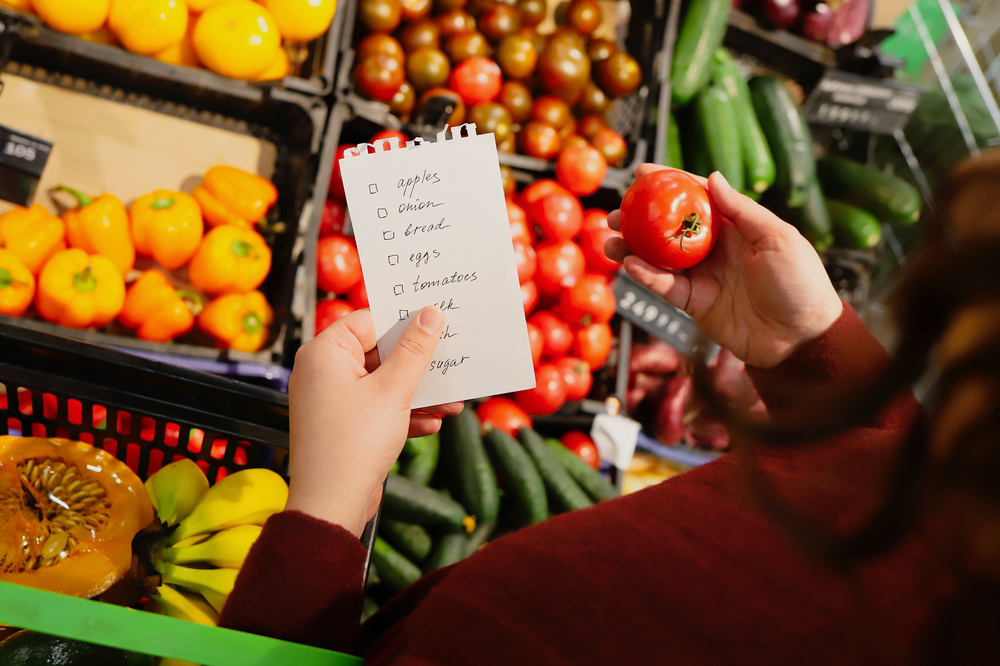
Also try to go as early in the morning as you can, as this is the time when stores are fully stocked, are less crowded, and you aren’t as fatigued as you would be at the end of the day, which will lead to better food shopping decisions.
If you’re on a tight budget, ordering your groceries for delivery can also help you stay on track without taking up too much time. Seeing the total before you check out is a great reminder to stay within your budget!
SUMMARY
Go grocery shopping in the morning, after you’ve eaten, and stick to your shopping list to stay within your budget.
Buy Whole Foods Whenever Possible
Less processed foods like whole grains, canned beans, and fruit are often less expensive than say, white bread, refried canned beans, and canned fruit and are easier to buy in larger quantities for less!
Some foods are more affordable in less processed forms. For example, a block of uncut cheddar is more affordable than bagged shredded cheddar because of the cellulose coating used to make packaged cheese look fresher on the store shelves.
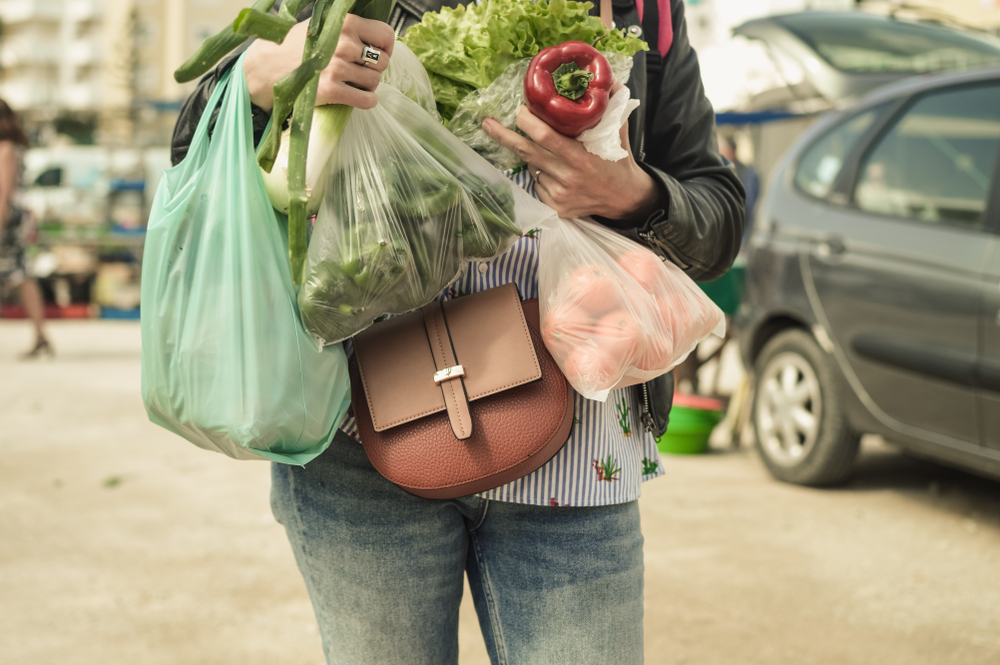
Buying pre-cut or frozen veggies can cut prep time in half though they can sometimes cost more, so watch out! If you have the room in your budget for them, pre-prepared veggies and fruits are just as healthy as whole-bought so long as they aren’t preserved with any sugars or oils.
In-season fruits and vegetables will also cost less, as there is more in stock, which lessens the demand. Go for in-season produce as often as you can.
SUMMARY
Whole foods (unprocessed, as close to their original natural state as possible) are the healthiest options, and are often more affordable than processed foods.
Generic is Your Friend
The trick to eating healthy meals on a budget can go beyond coupon clipping and bargain-hunting (though those help too!) Name brand items are pricier than their generic counterparts. If you compare groceries, you’ll notice the generic brand is often more affordable and has the same ingredients as the name brand.
Almost all grocery stores will carry generic versions of popular name brands which can save you a lot in the end without sacrificing quality.
Replace Meat with Other High-Protein Foods
Meat isn’t always in the budget, and market prices can inflate the cost of chicken, turkey, and other animal proteins. Eating other protein-rich foods like legumes, eggs, canned fish, and tofu are nutritious options that will keep you as full as meat does.
Healthy Recipes Using Common Ingredients
1. Healthy Tuna Bake
Calories: 195 Fat: 11g Carbs: 18g Protein: 14g
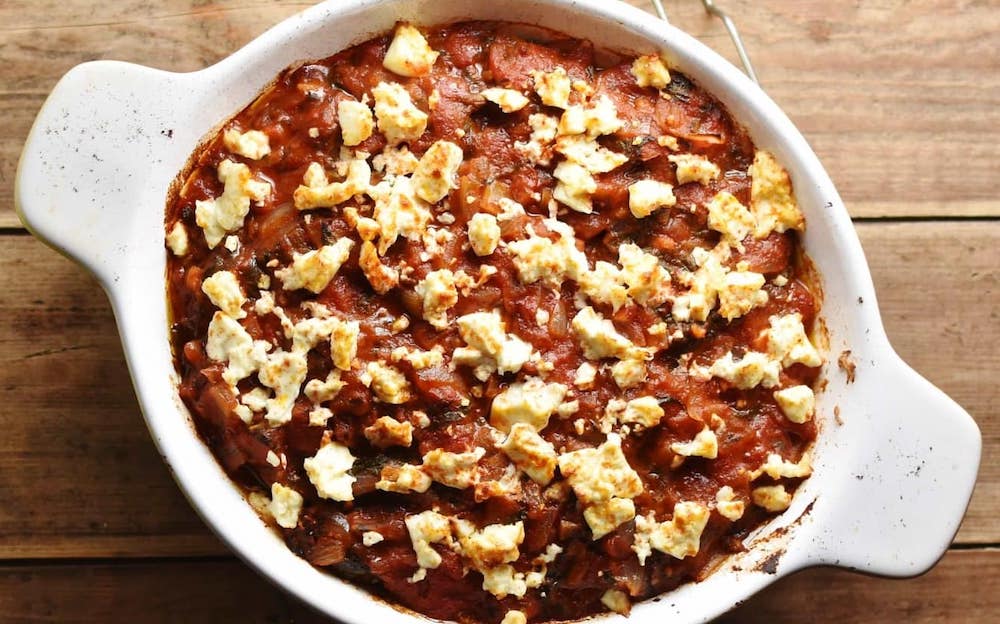
Ingredients: Butternut squash, onion, garlic, olive oil, canned tuna, chopped tomatoes, spinach, feta, bay leaf, chives, tomato puree, sea salt, paprika
2. Pasta Puttanesca
Calories: 132 Fat: 12g Carbs: 6g Protein: 2g
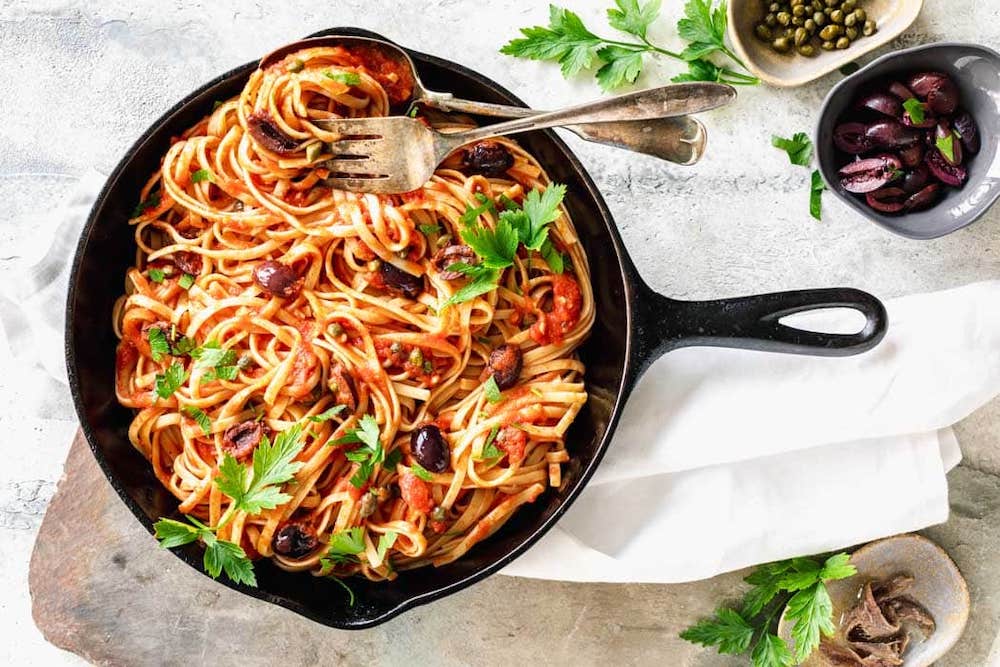
Ingredients: Tomato puree, olive oil, garlic, black olives, capers, anchovies, pasta, salt & pepper, crushed red pepper
3. Strawberry Baked Oatmeal
Calories: 196 Fat: 5g Carbs: 33g Protein: 7g
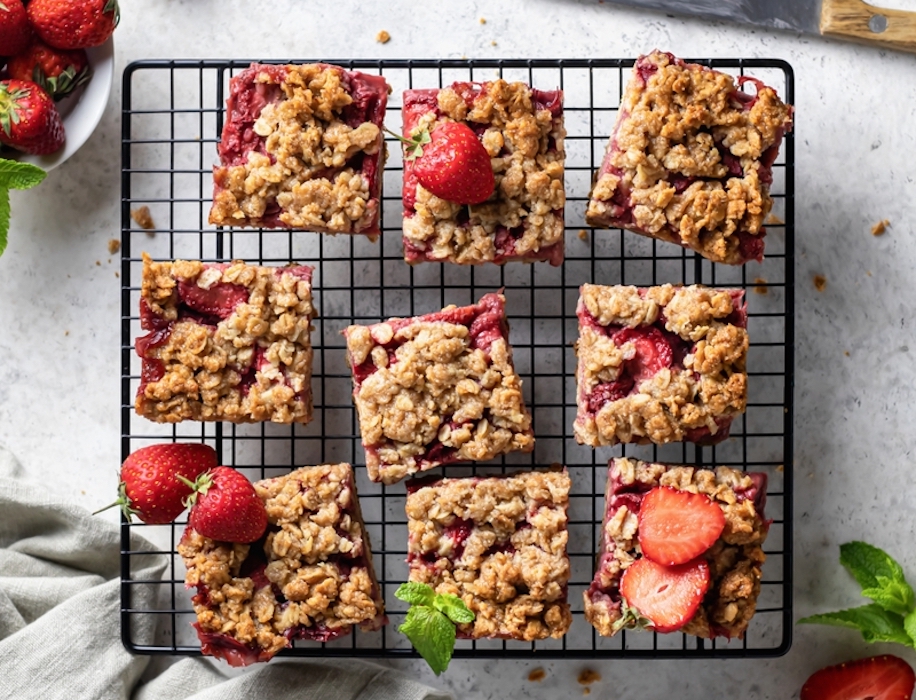
Ingredients: Strawberries, milk, banana, rolled oats, chia seeds, cinnamon, vanilla extract
4. Sweet Potato & Cauliflower Rice Bowl
Calories: 344 Fat: 18.1 Carbs: 39g Protein: 10.7g

Ingredients: Sweet potato, olive oil, orange juice, lime juice, cilantro, garlic, cauliflower, black beans, avocado, Pico de Gallo sauce, cumin, oregano, salt & pepper
5. Vegetarian Enchilada Bake
Calories: 286 Fat: 11g Carbs: 37g Protein: 12g
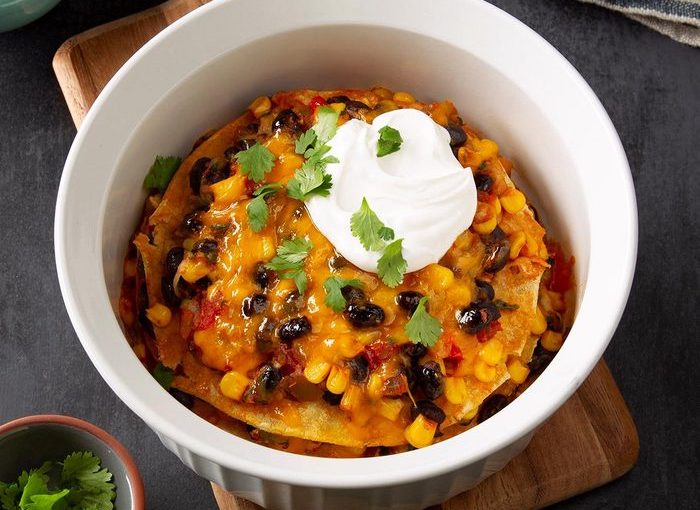
Ingredients: Zucchini, red pepper, olive oil, garlic, corn, black beans, salsa, cilantro, tortillas, cheddar, spices
6. Baked Pork Chops
Calories: 302 Fat: 17g Carbs: 1g Protein: 34g
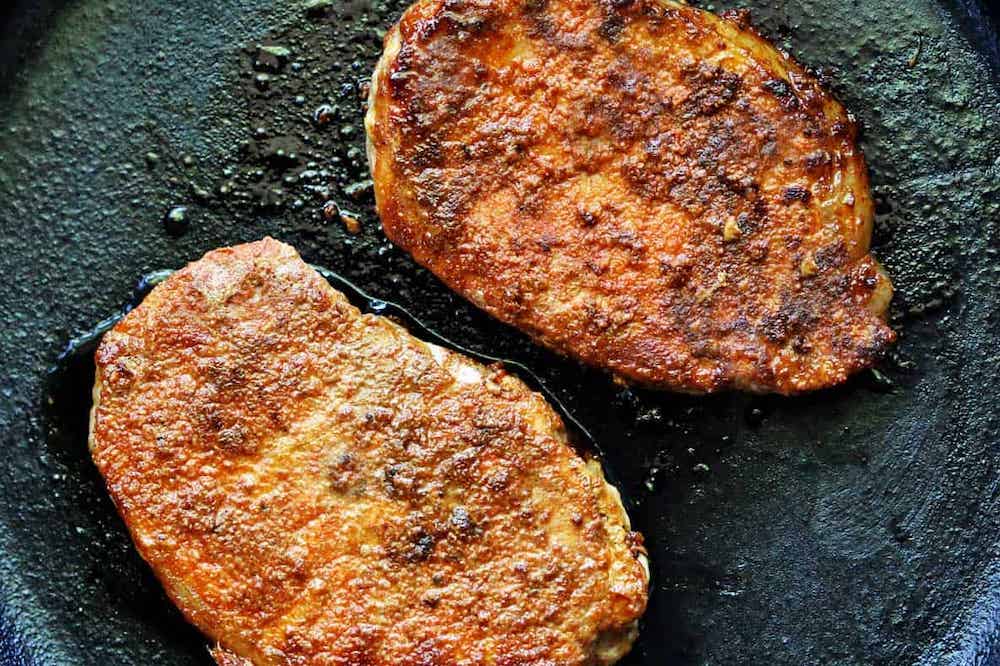
Ingredients: Pork chops, paprika, garlic powder, cooking spray, salt & pepper
7. Crockpot Pot Roast
Calories: 417 Fat: 12g Carbs: 23g Protein: 52g
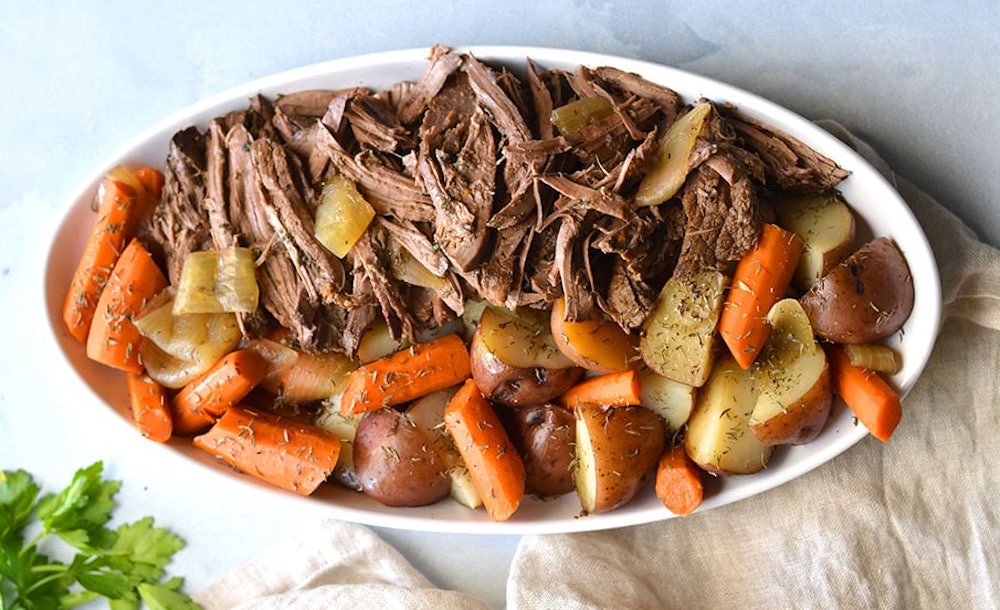
Ingredients: Lean eye of round beef roast, white onion, carrots, baby red potatoes, Worcestershire sauce, vegetable broth, parsley, thyme, garlic & onion powder, cornstarch, salt & pepper
To learn more about how to eat healthy on a budget, check out this blog on good milk alternatives to buy when dairy prices go up, even more healthy food recipes, strategies for succeeding on a Whole30 diet (which emphasizes eating whole foods including beef!), and examples of weekly meal plans and prepping.


